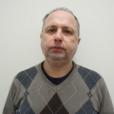

Showing 1221 - 1240 of 1513 results


Raghav completed a double degree in Mechatronics Engineering and Computer Science and is currently working with the Electrical Engineering Team at the Australian Center for Neutron Scattering.

Role at ANSTO

Kathleen manages the quality and document management systems, and oversees procedures for inspection, testing, and calibration of equipment and systems, to support the accelerator operations and beam lines.

High-energy heavy ion microprobe
The high-energy heavy-ion microprobe is used for the characterisation or modification of material properties at depths from approximately 1 micrometre to maximum depths of up to 500 micrometres from the material surface.

As a Consultant Health Physicist within ANSTO’s Radiation Services team, Bronte brings her experience in the field of radiation detection and protection to support the development and delivery of complex programs in a commercially focu
New underground lab to shed light on dark matter
Stage 1 of the Stawell Underground Physics Laboratory was officially opened today. It will be home to multi-disciplinary scientists from five research partners who help us understand dark matter.
Features and benefits
Overlaying a 360° x 90° radiation image onto a panoramic optical image of the scene, makes interpretation much easier. The spectroscopic detector at the heart of the imager enables the accurate visualisation and identification of sources across a broad energy range.
Dating Aboriginal rock art using mud wasp nests
Radiocarbon dating of mud wasp nests was used as an indirect method of dating the Gwion Gwion style.
Funding supports seafood traceability
Grant supports development of handheld technology to verify origin of seafood.
COVID-19 proof, healthy workstation wins ACS COVID-19 Online Hackathon
Powerhouse Museum used powerful non-invasive nuclear and accelerator techniques to gain information about significant Aboriginal cultural belongings
A number of sophisticated non-invasive nuclear and accelerator techniques were used to provide information about the origin and age of an Australian Aboriginal knife held in the collection of the Powerhouse Museum.
Promising material provides a simple, effective method capable of extracting uranium from seawater
An Australian-led international research team, including a core group of ANSTO scientists, has found that doping a promising material provides a simple, effective method capable of extracting uranium from seawater.
Research finds a potential new "silver bullet" nanoparticle to treat brain cancer
Collaboration investigates a promising new nanoparticle for potential use in combination with other therapies for brain cancer
ANSTO's neutrons will help miners see what's inside drill cores with new clarity
The mining industry is set to benefit from a new Australian capability that uses a nuclear scanning technique to detect the presence of precious metals and strategic minerals in a core sample.
Research provides understanding of migration of early peoples into Oceania
Research has revealed the Lapita cultural group interacted with the indigenous people of Papua New Guinea more than 3,000 years ago and set the stage for the peopling of the Pacific
New antibody-like molecule which could be used in therapy to prevent infection from multiple forms of malaria
The protein mapping workhorses of the Australian Synchrotron, Macromolecular and Microfocus crystallography beamlines, MX1 and 2, continue to support important biomedical research in the development of vaccines and new therapeutics.

Role at ANSTO

Role at ANSTO

Radiation Safety Training
Radiation safety training courses delivered at ANSTO's Lucas Heights precinct offer access to on-site radiation facilities and our expert team also deliver bespoke courses around Australia.